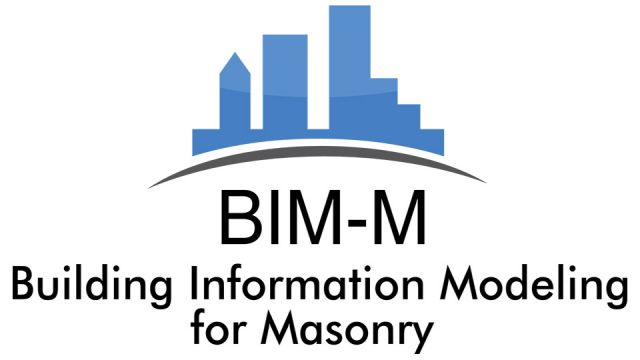The BIM for Masonry Project Update July 2014
Sponsors continue to pledge support
The Building Information Modeling for Masonry (BIM-M) initiative continues gaining momentum with the New York State Concrete Masonry Association (NYSCMA) pledging to continue sponsorship, and Duke Concrete Products of Queensbury, New York coming on board as a new sponsor.
The initiative is identifying barriers to and strategies for the full implementation of masonry materials and systems into BIM software for the design and construction industries. The purpose of the initiative is to unify the masonry industry and all supporting industries through the development and implementation of BIM for masonry software to facilitate smoother workflows and collaboration across all disciplines. Stakeholders are expected to benefit greatly from the integration of masonry into the next generation of BIM tools, such as:
Building Owners – information for understanding life-cycle costs of ownership; record keeping for tracking maintenance and upkeep; tools for creating and maintaining as-built drawings.
Architects – design tools, methods for quickly importing masonry details and product models into BIM authoring tools; uniform language and classification systems for masonry units and assemblies; tools for describing air, thermal, moisture and vapor control layers within BIM models; tools for cost estimating while in the programming and schematic design phase.
Engineers – tools for sharing information with architects and converting design information into structural analysis models (2-D and 3-D); means for generating and applying masonry details to models.
Manufacturers and Suppliers – ability to create standard building product models with specifications; improved access to procurement and supply requirements and E-commerce platforms; links to MRP (materials requirements planning) and EPD (environmental product declarations).
Craftworkers – opportunities to reclaim and expand market share; data sharing for increased safety and productivity.
Mason Contractors – increased opportunities for promoting masonry construction; tools for interactive scheduling and coordination; safety management tools; interoperability tools for improved communications with architects and engineers and construction managers.
Construction Managers/General Contractors – interactive scheduling, quantity takeoff and coordination tools; safety management tools; tools for improved communications with mason subcontractors, enclosure subcontractors (glass, concrete, roofing, etc.), structural steel subcontractors, architects, engineers and owner; planning tools for site logistics and lean construction.
About the Author
David Sovinski is the International Masonry Institute’s (IMI’s) national director of industry development. IMI represents an alliance between the International Union of Bricklayers and Allied Craftworkers (BAC) and union masonry contractors. His experience includes masonry project manager, estimator, and architecture and technology teacher at Indiana University Purdue University Indianapolis (IUPUI). Sovinski has a degree in construction management from Purdue University. He can be contacted via email at dsovinski@imiweb.org.



















